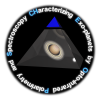
Contact
CHEOPS
Overview
on CHEOPS
BSCW Server
CHEOPS
Optics
3D Spectrograph
 |
Consortium Contact |
History of CHEOPS |
Project Overview |
Publications on CHEOPS |
Intranet BSCW Server |
|---|---|---|---|---|---|
| News | What is CHEOPS |
Science | Adaptive Optics |
ZIMPOL | Near-Infrared 3D Spectrograph |
|
The CHEOPS Near-infrared Integral Field Spectrograph
|
||
|
Optical concept of the CHEOPS IFS with an integral field unit (IFU). The IFU consists of a micro-lens array with 254x254 hexagonal micro-lenses. |
The Adaptive Optics assisted Integral Field Spectroscopic (IFS) channel of CHEOPS will be used to detect both old and young planets, but it is optimized for the first class of planets.
The IFS is based on an array of 254x254 hexagonal microlenses --- the so called integral field unit IFU --- located on the adaptive optics focal plane, each microlens having a pitch sampling half the FWHM of the central peak of the diffraction pattern (0.0138 arcsec projected on the sky), so that a total area of 3.5x3.5 arcsec on the sky is sampled. The array of microlenses form an array of micropupils, which are reimaged onto the detector by means of an afocal system made of a dioptric collimator and two dioptric cameras. |
|
|
3D drawing of the Integral Field Spectrograph with two cameras, one sensitive in J-Band, the other one sensitive in H-Band. |
||